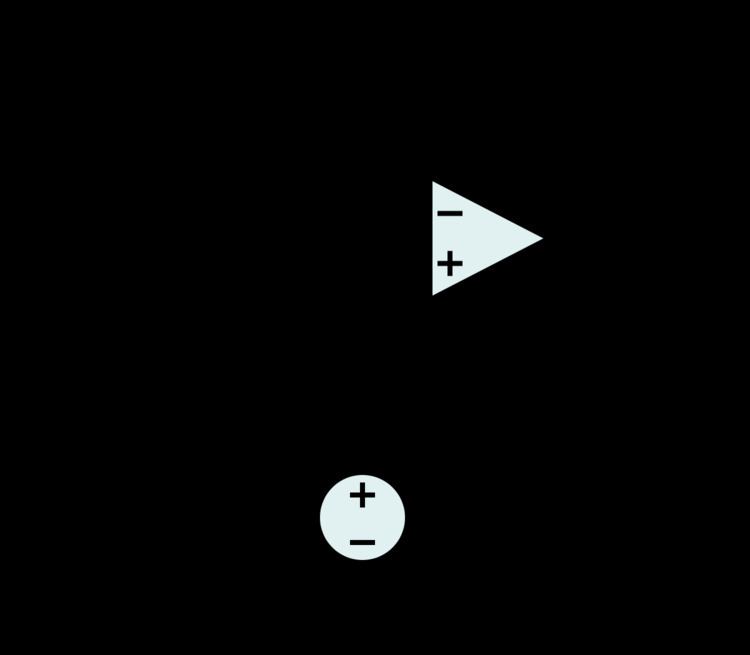 | ||
The negative impedance converter (NIC) is a one-port op-amp circuit acting as a negative load which injects energy into circuits in contrast to an ordinary load that consumes energy from them. This is achieved by adding or subtracting excessive varying voltage in series to the voltage drop across an equivalent positive impedance. This reverses the voltage polarity or the current direction of the port and introduces a phase shift of 180° (inversion) between the voltage and the current for any signal generator. The two versions obtained are accordingly a negative impedance converter with voltage inversion (VNIC) and a negative impedance converter with current inversion (INIC). The basic circuit of an INIC and its analysis is shown below.
Contents
Basic circuit and analysis
INIC is a non-inverting amplifier (the op-amp and the voltage divider R1, R2 on the figure) with a resistor (R3) connected between its output and input. The op-amp output voltage is
The current going from the operational amplifier output through resistor
So the input
In general, elements
Application
By using an NIC as a negative resistor, it is possible to let a real generator behave (almost) like an ideal generator, (i.e., the magnitude of the current or of the voltage generated does not depend on the load).
An example for a current source is shown in the figure on the right. The current generator and the resistor within the dotted line is the Norton representation of a circuit comprising a real generator and
That is, the combination of the real generator and the INIC will now behave like a composed ideal current source; its output current will be the same for any load
The ideal behavior in this application depends upon the Norton resistance
the circuit is unstable (e.g., when
In principle, if the Norton equivalent current source was replaced with a Norton equivalent voltage source, a VNIC of equivalent magnitude could be placed in series with the voltage source's series resistance. Any voltage drop across the series resistance would then be added back to the circuit by the VNIC. However, a VNIC implemented as above with an operational amplifier must terminate on an electrical ground, and so this use is not practical. Because any voltage source with nonzero series resistance can be represented as an equivalent current source with finite parallel resistance, an INIC will typically be placed in parallel with a source when used to improve the impedance of the source.
Negative impedance circuits
The negative of any impedance can be produced by a negative impedance converter (INIC in the examples below), including negative capacitance and negative inductance. NIC can further be used to design floating impedances - like a floating negative inductor.
